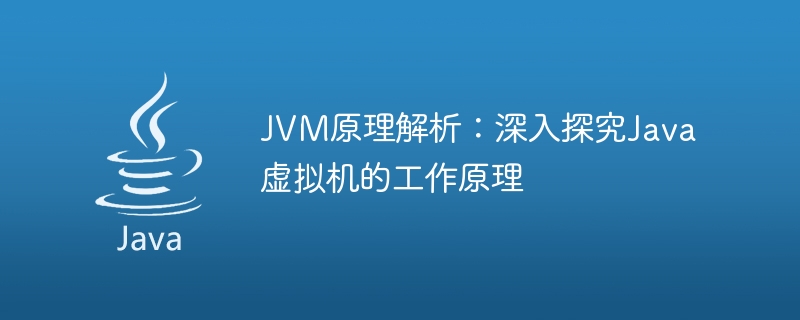

JVM principle analysis: In-depth exploration of the working principle of the Java virtual machine requires specific code examples
Introduction: The Java Virtual Machine (Java Virtual Machine, referred to as JVM) is Java The basic environment for program running, responsible for interpreting and executing Java bytecode. Understanding how the JVM works is crucial to developing efficient and stable Java applications. This article will delve into the working principle of the JVM through specific code examples.
1. Overview of JVM
JVM is the basis for running Java programs. It is an operating system-independent virtual computer that executes Java bytecode. JVM shields the differences in underlying operating systems and provides a unified running platform for Java programs. JVM mainly consists of the following three parts: ClassLoader, Execution Engine and Runtime Data Area.
2. The working principle of JVM
The working principle of JVM can be summarized as: loading, linking and initialization. These processes will be analyzed in detail below and explained through code examples.
Code example:
public class JVMWorkPrincipleDemo {
public static void main(String[] args) {
System.out.println(MyClass.class.getName());
}
}
class MyClass {
static {
System.out.println("静态代码块执行");
}
}Output result:
静态代码块执行 MyClass
In this example, when the program runs to System.out.println(MyClass.class .getName()) statement, the JVM will load and initialize the MyClass class. Because this is the first active use of the MyClass class, the static code block will be executed and "static code block execution" will be output.
Conclusion:
This article provides a detailed analysis of the working principle of the JVM, and uses specific code examples to illustrate the execution process of each stage. Understanding the operating mechanism of the JVM can help us write efficient and stable Java applications. At the same time, JVM performance tuning is also an important direction in Java development. Only by in-depth understanding of JVM principles can we better optimize performance. I hope this article will help you understand how the JVM works.
The above is the detailed content of Analysis of the working principle of Java virtual machine: In-depth exploration of the internal mechanism of JVM. For more information, please follow other related articles on the PHP Chinese website!
 How does a switch work?
How does a switch work?
 What should I do if the copy shortcut key doesn't work?
What should I do if the copy shortcut key doesn't work?
 What is the difference between Douyin and Douyin Express Edition?
What is the difference between Douyin and Douyin Express Edition?
 How to best set up virtual memory
How to best set up virtual memory
 eclipse tutorial
eclipse tutorial
 What does it mean to connect to windows?
What does it mean to connect to windows?
 How to set Chinese in vscode
How to set Chinese in vscode
 How to create a bitmap index in mysql
How to create a bitmap index in mysql




